Click on images to enlarge
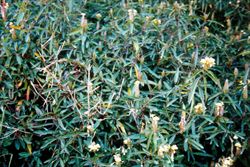
infestation (Photo: Land Protection, QDNRW)
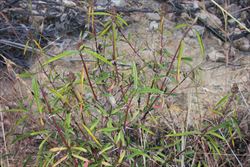
habit (Photo: Chris Gardiner)
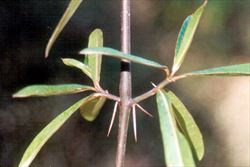
spiny stems and leaves (Photo: Land Protection, QDNRW)
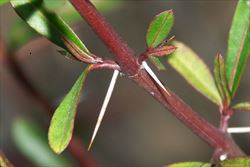
close-up of whitish spines and reddish stems (Photo: Chris Gardiner)
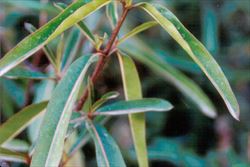
elongated leaves with reddish mid-veins (Photo: Land Protection, QDNRW)
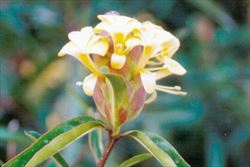
dense flower cluster (Photo: Land Protection, QDNRW)
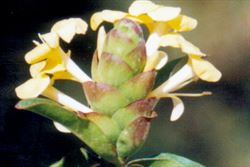
close-up of flowers and flower bracts (Photo: Land Protection, QDNRW)
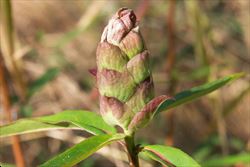
immature fruit (Photo: Chris Gardiner)
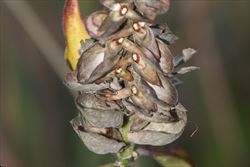
old fruit (Photo: Chris Gardiner)
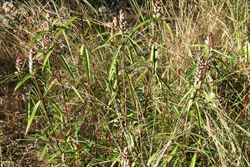
habit (Photo: Chris Gardiner)
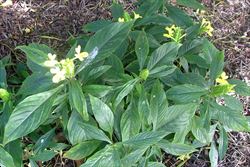
the similar yellow barleria (Barleria micans) has broader leaves and no spines in its leaf forks (Photo: Sheldon Navie)
Scientific Name
Barleria lupulina Lindl.
Family
Acanthaceae
Common Names
barleria, hophead, hophead barleria, hop-headed barleria, hophead Philippine violet, Philippine violet
Origin
Native to eastern India and Mauritius.
Naturalised Distribution
Naturalised in some parts of northern Australia (i.e. in the coastal districts of the Northern Territory and in northern and south-eastern Queensland). Also naturalised on Christmas Island and possibly naturalised in the northern parts of Western Australia.
Naturalised overseas in south-eastern USA (i.e. Florida), Hawaii, Indonesia and East Timor.
Notes
This species is regarded as an environmental weed or as a "sleeper weed" in many parts of northern Australia (i.e. Queensland, the Northern Territory and northern Western Australia). For example, it is listed as a high priority pest plant in the Cook Shire in northern Queensland.
Hophead barleria (Barleria lupulina) is also invasive in open woodland habitats and along watercourses in the Northern Territory and was also recently reported as being invasive in one location at Brookfield, in suburban Brisbane, in south-eastern Queensland. It has since been targeted for eradication at this location, due to the potential of this species becoming a serious environmental weed in the region.

